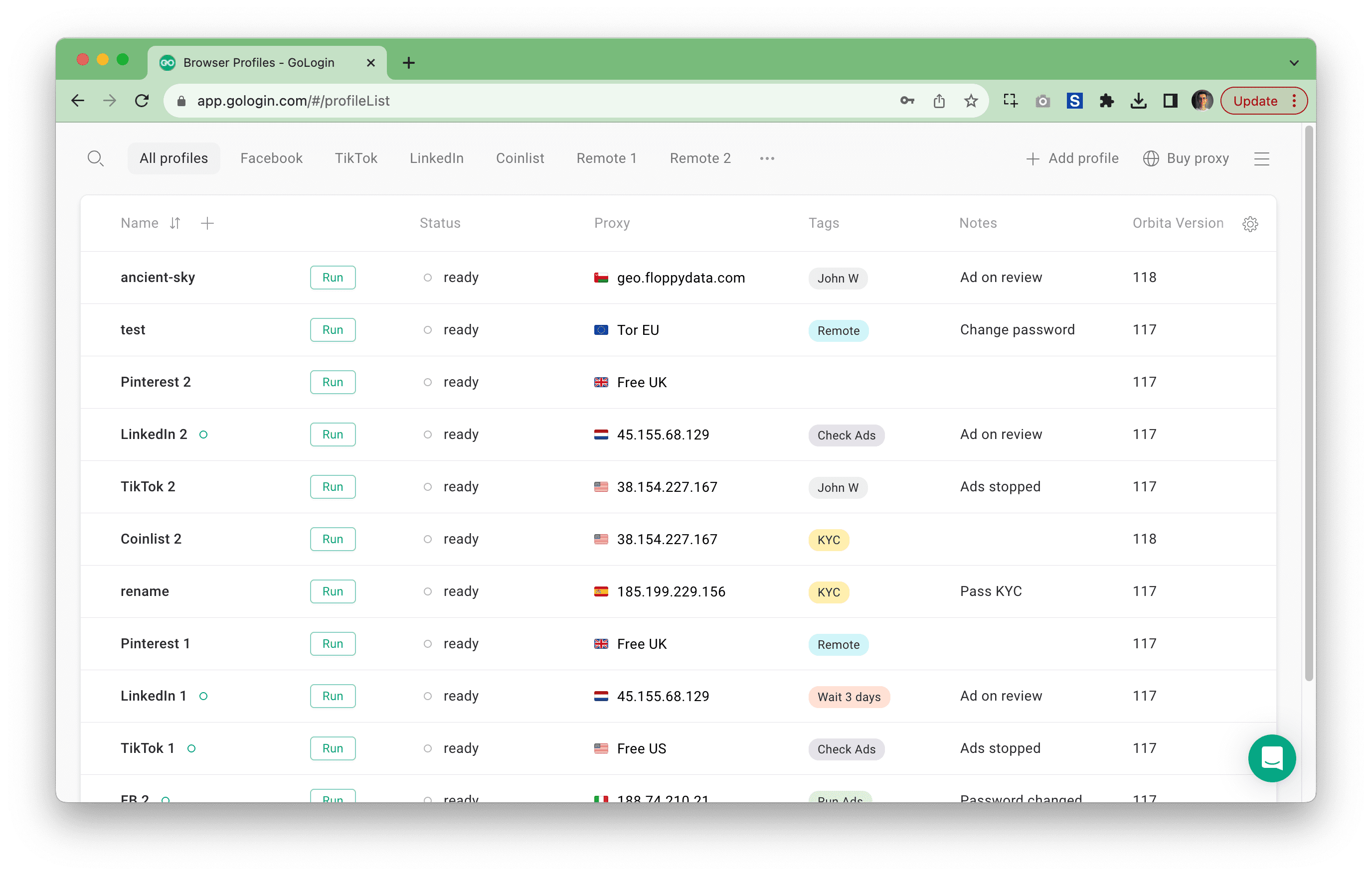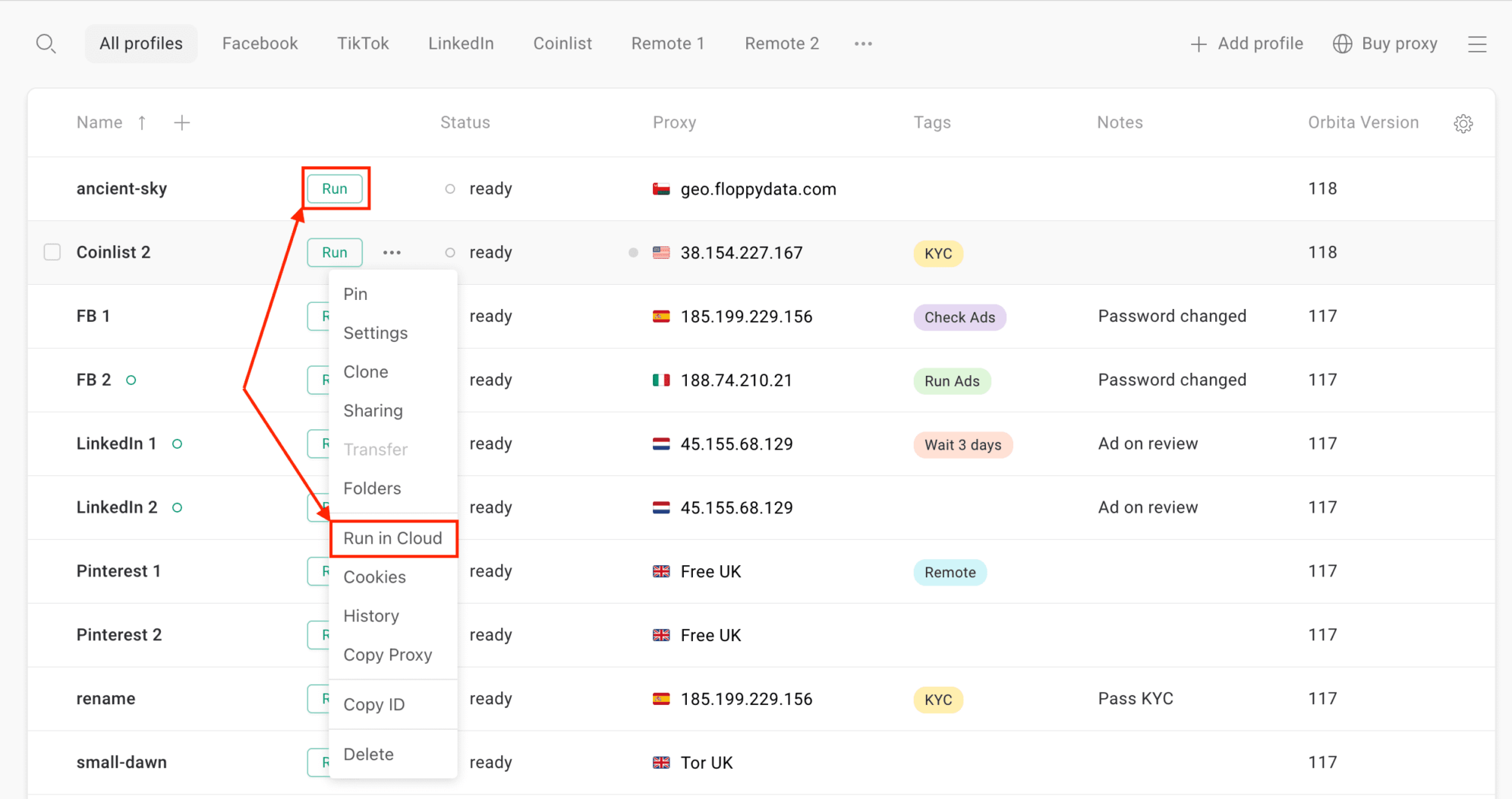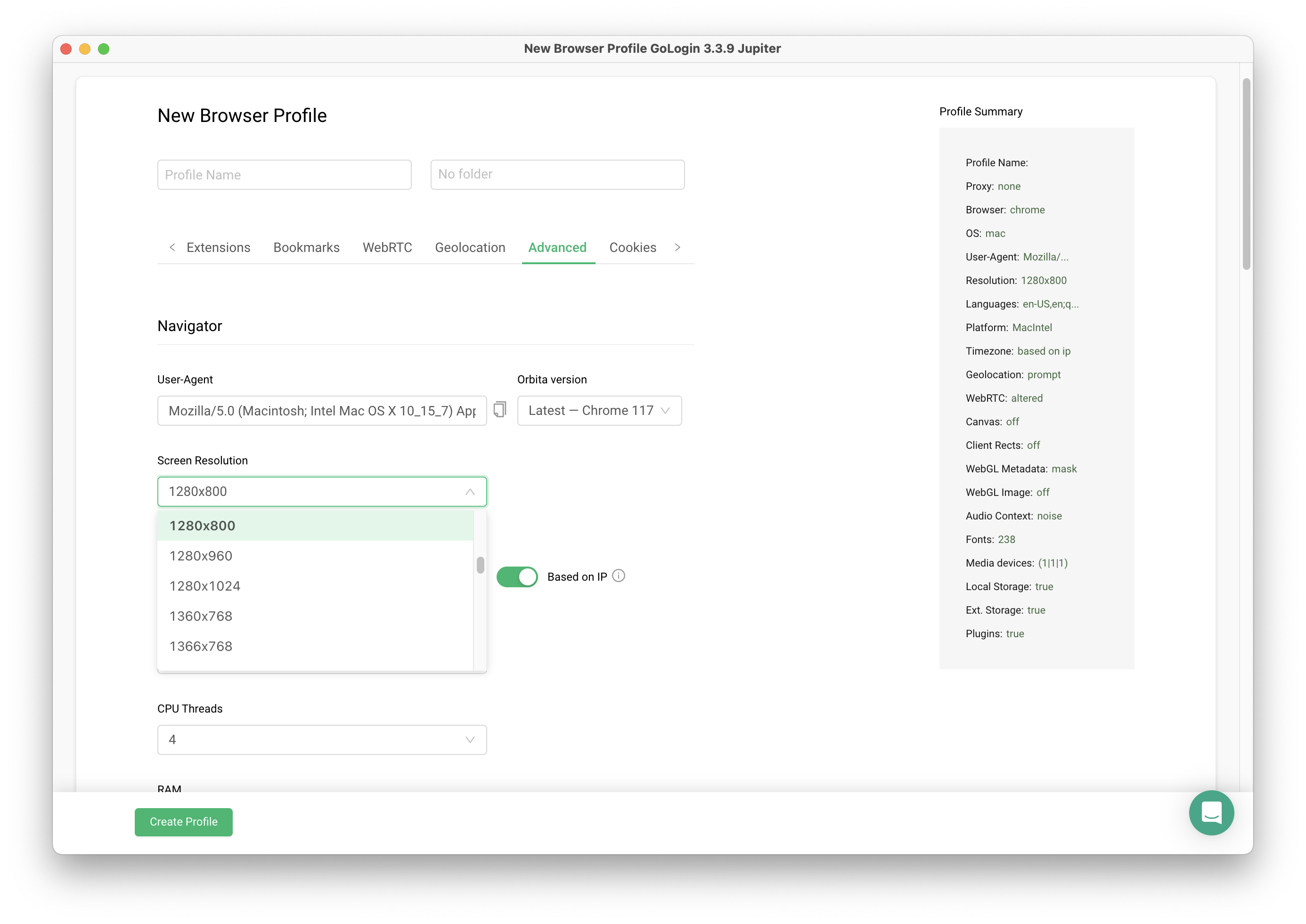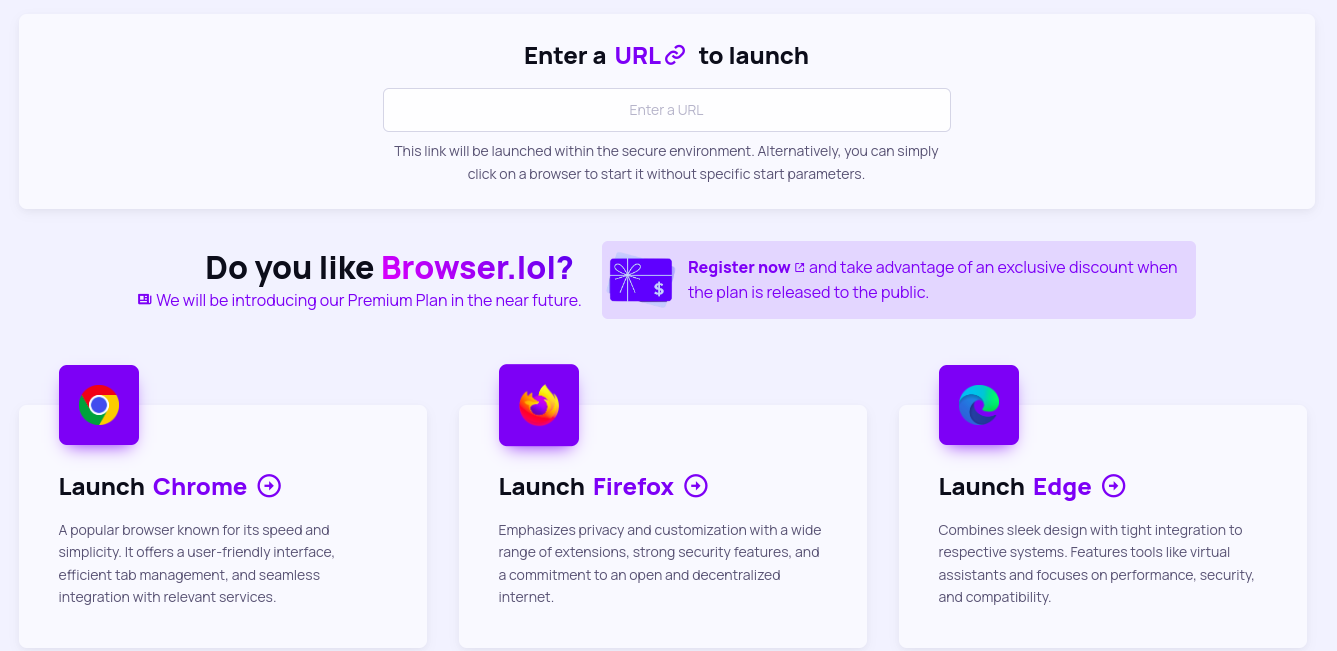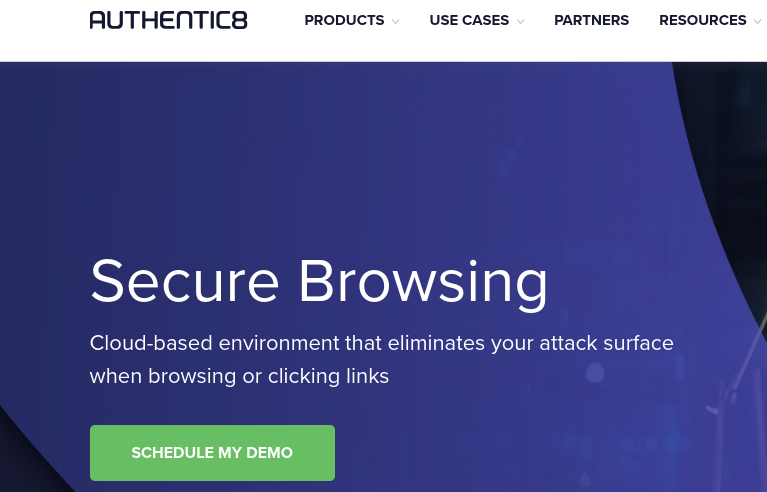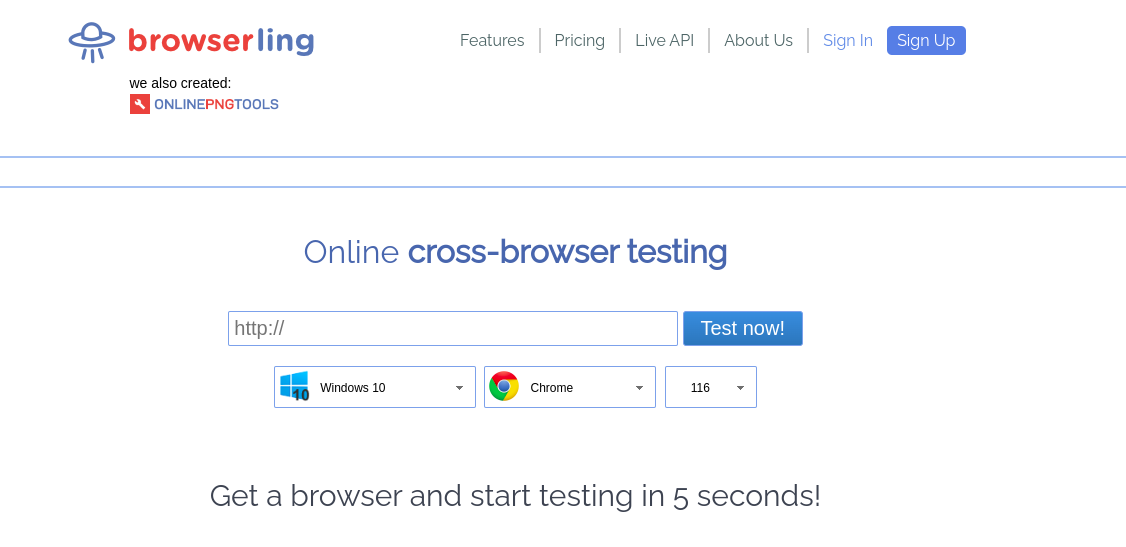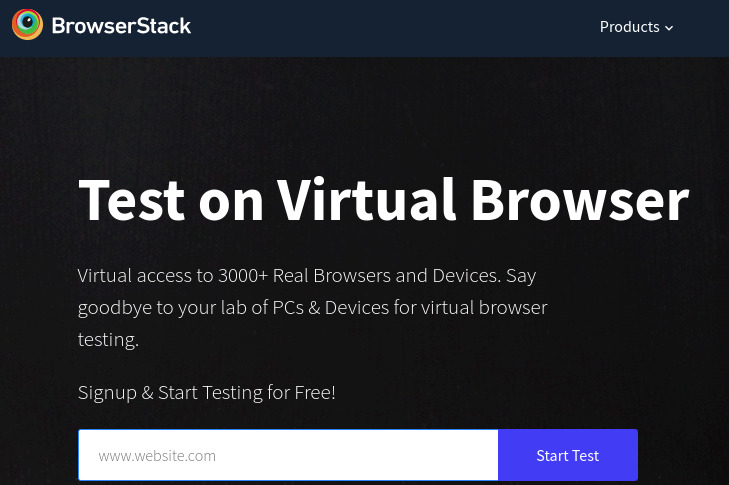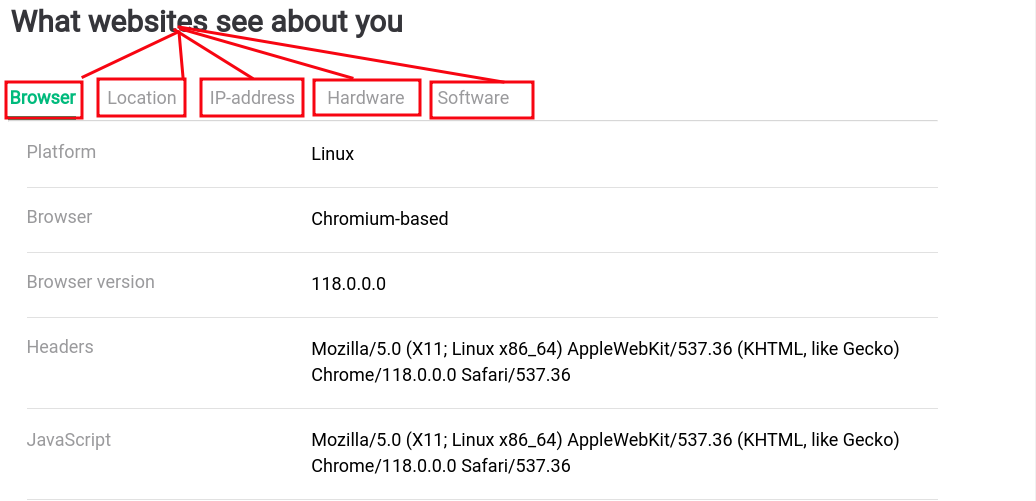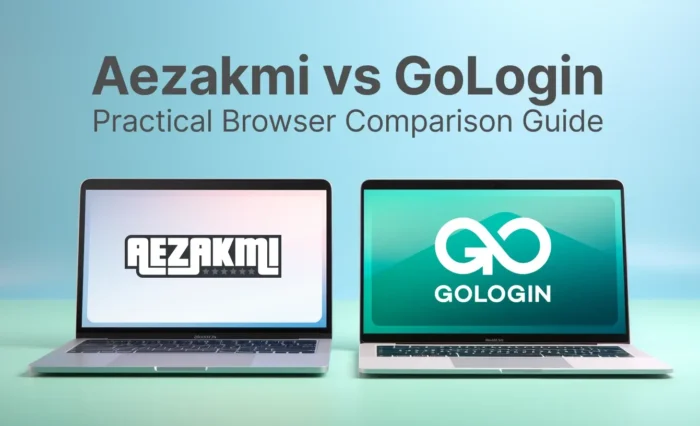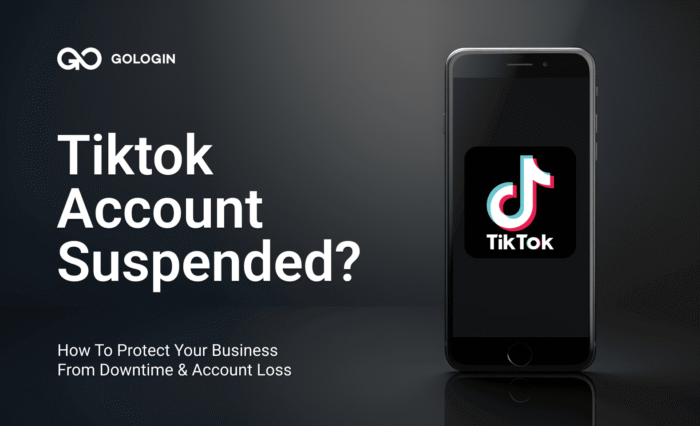In this article we will explore what a virtual browser is, and look at the best virtual browsers promising good privacy and tools for developers. Web browsers have become an essential pillar in the digital era, with over 5 billion monthly web page views across ten or more web browsers.
User privacy and security in common browsers remains a significant concern. For example, Google Chrome continues tracking people even when using ‘incognito mode’.
In addition, we’ll test how secure our connection is using Gologin Browser Checker.
What is a Virtual Browser?
A virtual browser is a web browser that runs in a virtual environment. We surf the web to search for information, conduct online transactions, communicate with others, etc., using a web browser installed on our local machine.
However, that comes with many challenges, such as constant tracking, data collection, and the risk of data breaches.
A browser virtual machine is one alternative that can be used to mitigate such threats. Instead of running web apps on our local user device, the browser runs in a virtual environment and is, therefore, isolated from the local computer’s operating system. This means that if there happens to be a malicious script that is run from within the virtual machine online browser, it will not have access to our operating system.
Virtual browsers have become indispensable for professionals such as journalists, especially those who work on sensitive investigations that require anonymity and privacy. These virtual browsers provide an additional layer of security to protect their sources and keep their browsing activities confidential.
What Are Most Popular Virtual Browsers?
The most popular virtual browsers include:
- GoLogin
- Browser.lol
- Authentic8
- Browserling
- BrowserStack.
- TraceFree
- DICloak
While virtual browsers are safer than our endpoint (host computer) browsers like Chrome, Safari and others, they are not fool-proof. Sometimes, virtual browsers cannot deal with modern browser fingerprinting, which may lead to information leaks.
Virtual Browser Comparison Table
| Browser | Multi-Account Mgmt | Fingerprint Protection | Cloud / Sandbox Isolation | Automation / RPA | Team Collaboration | API Integrations | Ease of Use | Pricing Model |
|---|---|---|---|---|---|---|---|---|
| GoLogin | ✅ Full profiles & isolation | ✅ Advanced fingerprint spoofing | ❌ Local app (not cloud) | ⚡ Supports automation scripts | ✅ Profile sharing & teamwork | ✅ Local & API access | ⭐ Intuitive, beginner-friendly | Freemium + paid plans |
| Browser.lol | ❌ Not designed for multi-account | ❌ Limited | ✅ Fully sandboxed in browser | ❌ None | ❌ None | ❌ None | ⭐⭐ Very simple, 1-click use | Free (basic), premium tiers |
| Authentic8 (Silo) | ✅ Yes, for enterprise users | ✅ Built-in protection | ✅ 100% cloud-hosted browser | ⚡ Supports workflows & policies | ✅ Enterprise team controls | ✅ Enterprise APIs | ⭐⭐ Enterprise-oriented, less casual | Subscription (enterprise pricing) |
| Browserling | ❌ Not designed for multi-account | ❌ None | ✅ Sandboxed browser in the cloud | ❌ None | ❌ None | ❌ None | ⭐⭐ Easy, minimal UI | Free (limited), paid plans |
| BrowserStack | ❌ No profiles | ❌ None | ✅ Cloud-based device/browser testing | ⚡ Automation for QA & testing | ✅ Team usage for devs | ✅ CI/CD integrations | ⭐⭐ Developer-focused | Subscription (developer pricing) |
| TraceFree | ❌ No account management | ✅ Blocks trackers & cookies | ✅ Cloud-rendered browsing | ❌ None | ❌ None | ❌ None | ⭐⭐ Easy but limited | Paid (consumer focus) |
| DICloak | ✅ Yes, multiple identities | ✅ Strong protection | ❌ Local app (not cloud) | ⚡ Supports automation workflows | ✅ Collaboration features | ✅ API support | ⭐⭐ Clean, modern UI | Subscription (tiers for individuals/teams) |
✅ = Available / strong support
❌ = Not available
⚡ = Limited / partial support
⭐ = Ease of use rating
Enhanced Use Case Applications
Anonymous Browsing and Identity Protection
Virtual browsers provide superior anonymity compared to VPNs or incognito mode. While VPNs only mask IP addresses and incognito mode prevents local history storage, virtual browsers create entirely separate digital identities that websites cannot link to your real device. This complete isolation makes virtual browsers the preferred choice for sensitive research, competitive intelligence, and privacy-critical applications.
Multi-Account Management for E-commerce and Marketing
Digital marketers and e-commerce professionals use virtual browsers to manage hundreds of accounts across platforms without triggering automated detection systems. Each virtual browser profile maintains unique fingerprints, cookies, and session data, allowing legitimate business operations across multiple marketplaces, social media platforms, and advertising networks.
Secure Web Development and Testing
Development teams leverage virtual browsers for cross-browser compatibility testing without installing multiple browser versions locally. The isolation prevents testing environments from affecting production systems while providing access to legacy browser versions for comprehensive application testing.
Malware Protection and Safe Browsing
Virtual browsers offer superior protection against web-based threats by containing all potentially malicious code within isolated cloud environments. Unlike traditional antivirus software that reacts to threats, virtual browsers prevent malware from ever reaching local systems.
Compliance and Regulatory Requirements
Enterprises operating in regulated industries use virtual browsers to maintain compliance with data protection regulations. The complete session isolation ensures sensitive information never touches local devices, supporting GDPR, HIPAA, and other regulatory requirements.
1. GoLogin: Best Virtual Browser Replacement
As discussed earlier, virtual browsers have a downside and may lead to digital identity leakage.
As a virtual browser replacement, GoLogin differs from a typical virtual browser. Technically, it’s based on Chromium, so it looks and feels just like Chrome. All the usual tabs, extensions, and bookmarks are there.
It allows both for top-level security and cross-browser testing on desktop and mobile platforms.
The main feature of GoLogin is its digital fingerprint engine, which provides you with multiple real browser identities. No other virtual browser has that. Because of that, GoLogin is used primarily for running multiple social media accounts.
Simply put, GoLogin empowers you to create multiple identities for different online virtual purposes. This is extremely handy if you’re an affiliate or a marketer on Facebook, Instagram, or Linkedin. This is impossible with any other virtual browser.

Download Gologin for free and manage multiple accounts without bans!
GoLogin Key Features
- It’s a Chromium browser: all your favorite extensions, bookmarks, and settings are there.
- Browser sessions pause and continue for every identity, so you don’t have to remember logins and passwords.
- Proxy Manager with built-in free proxies. Allows to escape all geolocation restrictions.
- Minimalistic beginner-friendly app interface.
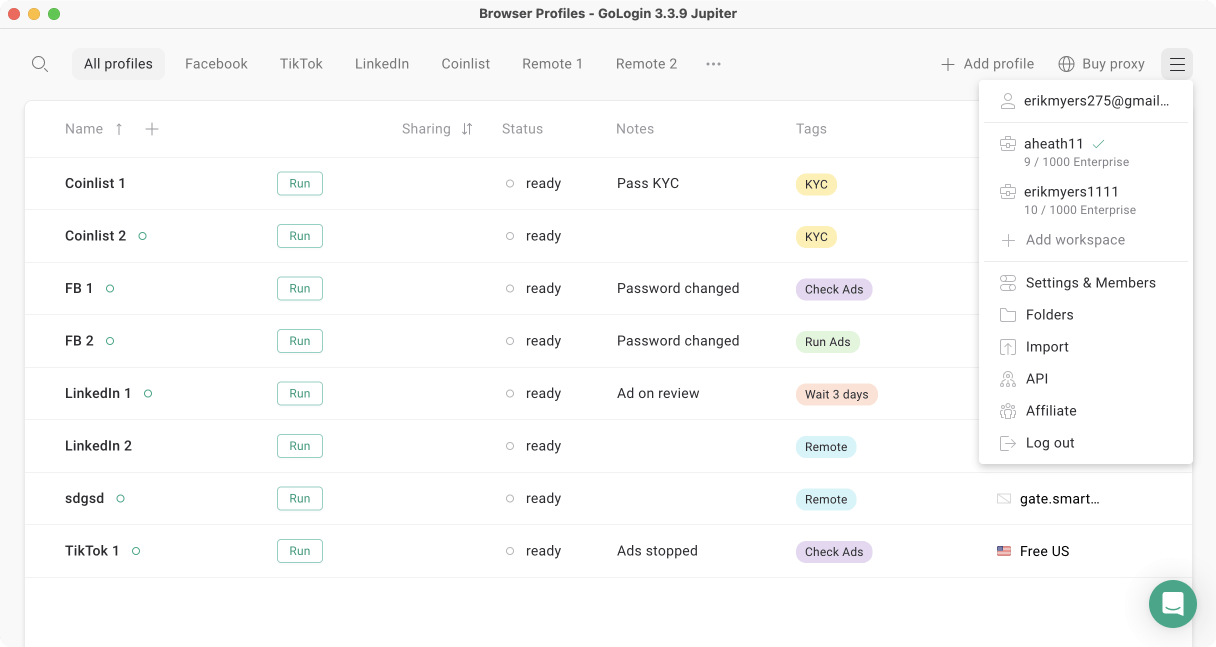 The main screen of GoLogin set up for running multiple social accounts.
The main screen of GoLogin set up for running multiple social accounts.
How to Run Multiple Virtual Browser Profiles in GoLogin
Gologin is an anti-detect browser that allows you to create and manage multiple browser profiles, each with its browser fingerprint, and you can log in to several accounts in the same browser. These profiles can run in the cloud.
GoLogin has both a desktop app and a full-scale web version. The web app works from literally any device, making GoLogin a truly virtual browser. There is no need to install anything on your device: just login and run your profiles there.
To run multiple browser profiles both on desktop or web app, create an account. You can sign up via Google and choose one that fits better.
After logging in, you are redirected to the main profile table with 5 profiles created by default. Click “Add profile” on top right to create a profile with custom settings (browser, OS, resolution, etc).
If needed, assign a separate proxy to each profile in the “Proxy” column. Choose the free built-in ones for a start.
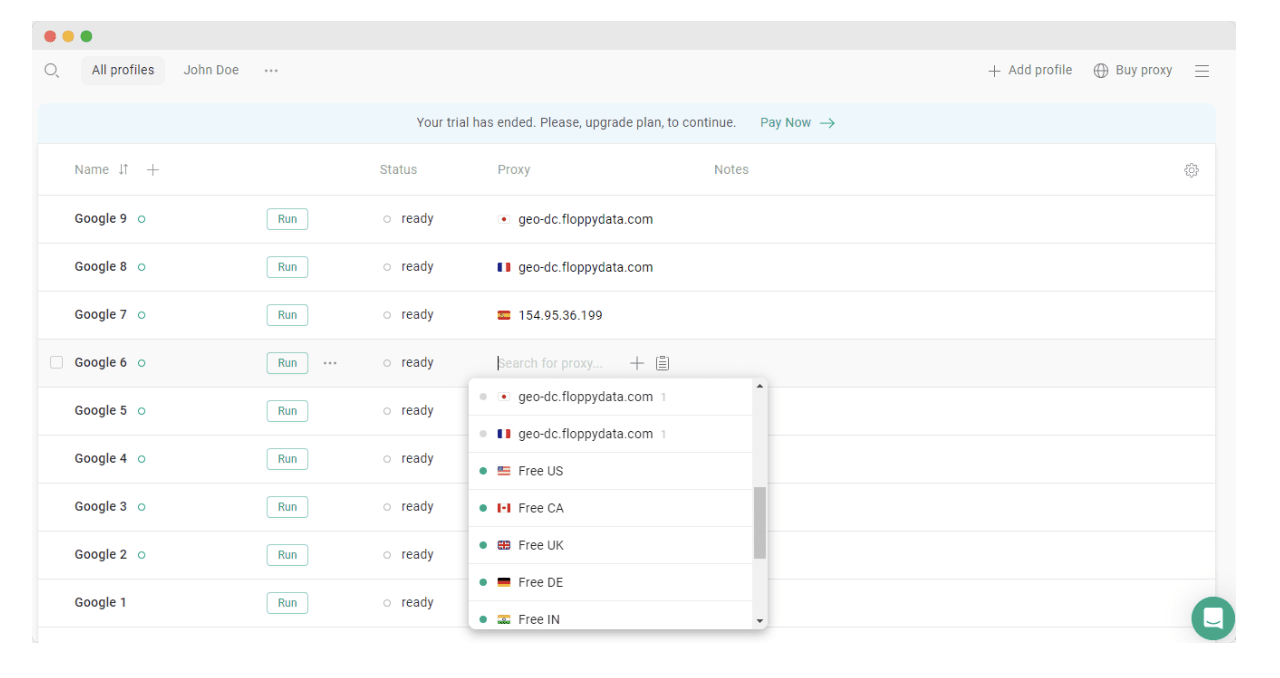 Proxy manager window. Feel free to choose our free proxies for a start.
Proxy manager window. Feel free to choose our free proxies for a start.
Click on the “Run” button on each profile to run it. It opens a new isolated browser window. You can also hit “Run in Cloud“: this will run your browser window not on your computer, but on our safe cloud server. This fits well for slower machines and remote access from tablets and phones.
Log in to different accounts on the same website from the different profiles. The platforms won’t see it’s you controlling these multiple identities.
When the work is done, close the window or click the “Stop” button next to a running profile. Your session will sync to a server: when you return, you will continue from where you left.
Web Testing Features
Apart from social media functionality, GoLogin is used a lot by web developers and testers. It allows to adjust specific manual parameters of browsers: screen resolution, browser versions, device and browser type, proxy traffic, API options and so on. All of these options are available in Add Profile – Advanced.
GoLogin also allows to organise work with hundreds of browser profiles into one window, which is extremely comfortable for testers. It can even be used as a remote browser: you can log in through the web cloud version on the website.

Download Gologin for free and manage multiple accounts without bans!
What Should I Consider When Choosing the Best Virtual Browser?
When choosing the best virtual browser for your needs, it’s essential to consider several key factors.
- Firstly, take a close look at the security features each browser offers. Ensure that it provides robust privacy and security measures, such as encryption and blocking malicious websites. Your online safety should be a top priority.
- Secondly, consider the price of the virtual browser. While some may be free, others might come with a subscription fee. Ensure it aligns with your budget and offers the needed features without breaking the bank.
- Compatibility is another crucial aspect to assess. Check whether the virtual browser works on your preferred platforms: Windows, macOS, or mobile devices. The browser must be accessible on the devices you use most frequently.
- Lastly, take note of the browser’s load time. A fast-loading virtual browser ensures a smooth and efficient online experience, saving you time and frustration.

Download Gologin for free and manage multiple accounts without bans!
Choosing Top Virtual Browser Alternatives in 2025
Virtual browsers have become increasingly popular due to their ability to protect users from web-based threats and provide a safe and secure browsing experience.
This section discusses the top virtual browsers of 2025 that promise to deliver exceptional privacy and security features. These virtual browsers are designed to prevent web-based malware infections, support browser diversity, and protect users’ privacy online.
2. Browser.lol
Browser.lol, previously known as BIAB (Browser in a Box), provides an effortless means of utilizing virtual browsers within our current browser. Their basic package is free of cost and secure for all users to enjoy without registration.
Browser.lol provides virtualized instances of your favorite browsers. It features Chrome, Firefox, and Edge browsers that you can create in one click. The Tor browser requires you to log in, while other browsers, including the Brave Browser, are expected to launch soon.
Pros:
- Browser.lol is easy to use and does not require any installation or configuration.
- It ensures that your connections to their servers are securely established through a 256-bit encrypted socket connection.
Cons:
- Browser.lol is a web-based virtual browser, it requires a fast internet connection to function properly.
- Doesn’t support all the features of traditional web browsers.
3. Authentic8
Another top ranking virtual browser online is Authentic8. It is a cloud-based environment with fine-tuned access and data transfer policy. It offers complete isolation from all browsing and email link threats to protect our connection better.
To get started with Authentic8, you can book a demo here.
Pros:
- Authentic8 Silo does not leave any local traces of web activity, which helps protect user privacy.
- Authentic8 Silo offers a disposable browser, which helps protect search history.
Cons:
- Authentic8 Silo may not be suitable for all users, especially those who require specific browser features or extensions.
4. Browserling.com
Browserling.com offers a virtual browser service that allows users to access and test web pages on various real desktop browsers without installing them on their computers. It’s quite an old tool, but it it still used for virtual browser testing.
Its pricing includes a free plan limited to 3-minute sessions, and only Edge and Chrome browsers can be used.
Pros:
- Browserling allows developers to test their websites and web applications in different browsers and operating systems.
- Browserling has a good extension library.
Cons:
- Browserling demands a lot of resources, even with tab freezing.
- May not support all features of traditional web browsers.
5. Browserstack.com
BrowserStack is a cloud-based platform for cross-browser testing that provides users access to an array of real browsers and devices.
It also offers a virtual browser service that enables users to test their web applications and websites on various desktop and mobile browsers without installing them on their computers.
Pros:
- BrowserStack offers automated testing, which helps save time and resources.
- BrowserStack supports many real mobile devices, which helps ensure compatibility.
Cons:
- BrowserStack is expensive. It allows only three-minute sessions for the free plan.
- Response time may not be better than a locally installed virtual machine and is resource-heavy.
6. TraceFree

TraceFree is a unique cloud-based virtual private browser that positions itself as the world’s first browser offering complete anonymity and virus-free browsing. Unlike traditional virtual browsers, TraceFree runs entirely on remote servers in the cloud, ensuring that no data ever touches the user’s device.
Key Features:
-
Complete Device Isolation: The browser runs on TraceFree’s servers, not the user’s device, preventing any malware, cookies, or tracking data from reaching the local machine.
-
Total Anonymity: Websites can only see TraceFree’s server information, never the user’s real device, IP address, or location.
-
Zero Digital Footprint: No browsing history, cookies, or cache files are stored on the user’s device, making it impossible to trace browsing activity.
-
Built-in Virus Protection: Since no code executes on the user’s device, TraceFree provides better protection than traditional antivirus software.
-
Proprietary Privacy Policy: Users maintain their own privacy policy that overrides any website’s data collection attempts.
-
Competitive Pricing: Plans start at $6.25 per month when paid annually, making it cheaper than many antivirus solutions.
TraceFree is particularly valuable for users requiring maximum privacy and security, including journalists, researchers, and anyone needing to browse sensitive content without leaving digital traces.
7. DICloak

DICloak distinguishes itself as a premium virtual browser engineered for the disciplined orchestration of diverse online personas. Embedded privacy mechanisms, coupled with a thoughtfully designed user interface, meet the demands of professionals requiring seamless, undetectable transitions between authenticated profiles. The solution’s fortressed security architecture, harmonised with minimal-friction operation, positions it as a formidable complement to incumbents such as GoLogin and Browser.lol.
Key Features:
- Praised for strong security, efficient multi-account management, and user-friendly interface.
- Designed for privacy and streamlined workflows across different identities
How to Test if Your Virtual Browser Is Secure
Gologin has a fantastic feature that allows us to check how our digital footprint appears to trackers. Check Browser Fingerprint tool can be very helpful to identify possible leaks and mask our identity using the custom settings.
Information from the analyzer includes Browser information, our location, IP address, and even the hardware we are running on.
To test if your virtual browser actually makes you secure:
- Open the GoLogin Browser Fingerprint Checker website
- Wait a few seconds as the tool checks your fingerprint. See all the info most websites see about you.
- If your virtual browser leaks your real device and IP data, try the same fingerprint test through GoLogin and compare.
Frequently Asked Questions
Does GoLogin offer a free trial?
Yes, GoLogin offers a free trial of all paid features for seven days with no restrictions when registering a new account. Additionally, GoLogin offers a forever-free plan that includes three profiles in the browser and all the benefits of GoLogin, except for sharing profiles and team members.
The free plan includes free proxies, encrypted, and web-version browser profiles. Users can access the free trial by registering a new account on the GoLogin website.
Can virtual browsers be detected?
Yes. Websites can detect virtual browsers, but it takes work. Virtual browsers can be detected by analyzing the browser’s user agent string, which may contain information about the virtual environment.
However, Gologin can also be configured to mimic the user agent string of a real browser, making it difficult for websites to detect them. Additionally, virtual browsers can be configured to use real IP addresses, making detecting them even harder for websites.
How do virtual browsers avoid tracking?
Virtual browsers use anti-tracking techniques like masking the IP address, changing the user agent, and using proxies for connection to other servers. For instance, GoLogin emulates a new device fingerprint that websites take for a real one. It lets one mask their digital identity and avoid online tracking.
Can I use virtual browser online free?
Yes, most of the tools described above offer free testing use. However, they can be quite limited, either by safety, features or by use time. We recommend to try using GoLogin on a free plan to not be compromised by any of these factors.
What is a virtual browser and how is it different from a normal browser?
A virtual browser runs in an isolated or cloud-based environment, ensuring that your system remains protected from malware, tracking, and fingerprinting. Unlike regular browsers, virtual browsers are built specifically for privacy and multi-account workflows.
Do I still need a VPN if I use a virtual browser?
A VPN only hides your IP address. A virtual browser goes further by isolating cookies, storage, and even spoofing browser fingerprints. For maximum privacy, many users combine a VPN with a virtual browser.
Can virtual browsers completely prevent browser fingerprinting?
Advanced virtual browsers such as GoLogin and Multilogin offer substantial protection against browser fingerprinting by fabricating a unique and artificial digital fingerprint for each session. In contrast to conventional browsers, which reveal native device attributes—including screen dimensions, font inventories, hardware identifiers, timezone and locale settings, and various other metrics—virtual browsers synthesize fingerprints that are indistinguishable from genuine devices, thereby presenting a distinct apparatus to each inspected web page and rendering remote identification strategies ineffective.
Conclusion
With an increasing number of online threats and data breaches, ensuring the safety of our personal information has become more crucial than ever before.
A virtual browser may be an excellent option to improve cross-browser testing, protect your privacy, or browse the internet safely.
Whether you’re safeguarding your online shopping experiences, in an organization seeking to protect their digital assets, or a developer aspiring to test their creations in a risk-free environment, the utility of virtual browsers is undeniably vast and varied.

Download Gologin for free and manage multiple accounts without bans!
Read other posts about Reviews of browsers:
- Ghost browser alternative
- Kameleo browser review
- Multilogin chrome browser
- Adspower browser vs gologin
- Morelogin browser alternative
- Incogniton vs gologin
- Best proxy browser
- Browserjet review
- Roxybrowser review
- Gologin vs hidemium
- Xlogin review
- Insomniac browser review
- Swspybrowser review
- Yunlark review
- Loginways review
- Nstbrowser review
- Hydraheaders browser review
- Gologin-vs-maskfog review
- Vision-browser review
- Ultimate orb review
- AntBrowser-browser-review
- Vmlogin browser review
- Gologin-vs-identory
- Gologin-vs-switch antidetect
- Antikbrowser review
- Camoufox review
- Geelark review
- Dicloak online browser
- Vmmask antidetect browser
- Hidemyacc browser review
- Rebrowser review
- Session-box-vs gologin
- Multibrowser-review
- Accovod-vs-gologin
- Xbrowser review
- Undetectable browser-vs-gologin
- Bitbrowser-review
- Fingerprintswitcher
- Aezakmi browser review
- Marketerbrowser review
- Genlogin browser review
- Linken-sphere review
- Indigo-browser
- Xpass browser alternative
- Wade browser review
- Surfinite review
- Lalicat-browser review
- Masq-antidetect review
- Octo-browser vs gologin
- Dolphin-anty vs gologin
- Mulogin review
- Aqum-browser review
- Lauth review
- Che browser vs gologin
- Logii review


